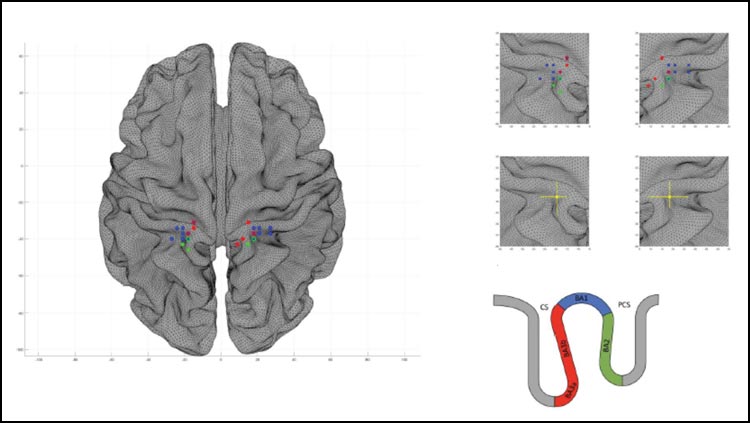
The thickness of the cortical region varies among women, associated with its use.
The exact location of the brain area representing genital touch varies among women. The new research in JNeurosci also found the region was thicker the more frequently the participants engaged in sexual intercourse.
The somatosensory cortex devotes brain space to detecting touch for each part of the body. But the exact location of the female genital field in this map had been controversial. Previous studies produced conflicting results because of less precise mapping methods.

Interindividual variability of the genital somatosensory cortex in the MNI space. Credit: Knop et al., JNeurosci 2021
Knop et al. used fMRI to map the exact representation of female genitalia by measuring the brain’s response to a membrane vibrating over the clitoral region. The study was designed to take great care to avoid any discomfort the participants could experience when targeting such a sensitive body region. The somatosensory cortex represented the genitals next to the hips, matching the body’s anatomy. However, the precise location varied from woman to woman. The thickness of the genital field varied with the frequency of sexual intercourse, suggesting the region’s structure alters in relation to its use. These results allow for future studies examining the role of the genital field in healthy sexual function, sexual dysfunction, and especially in the long-term consequences of sexual abuse. Based on this precise mapping, future work can now potentially target the genital representation for treatment of clinical conditions.
Reference: “Sensory-Tactile Functional Mapping and Use-Associated Structural Variation of the Human Female Genital Representation Field” 20 December 2021, JNeurosci.
DOI: 10.1523/JNEUROSCI.1081-21.2021









“The new research in JNeurosci also found the region was thicker the more frequently the participants engaged in sexual intercourse.”
It appears that the researchers did not account for, let alone correct for, masturbation or homosexual experiences as alternate stimulations.